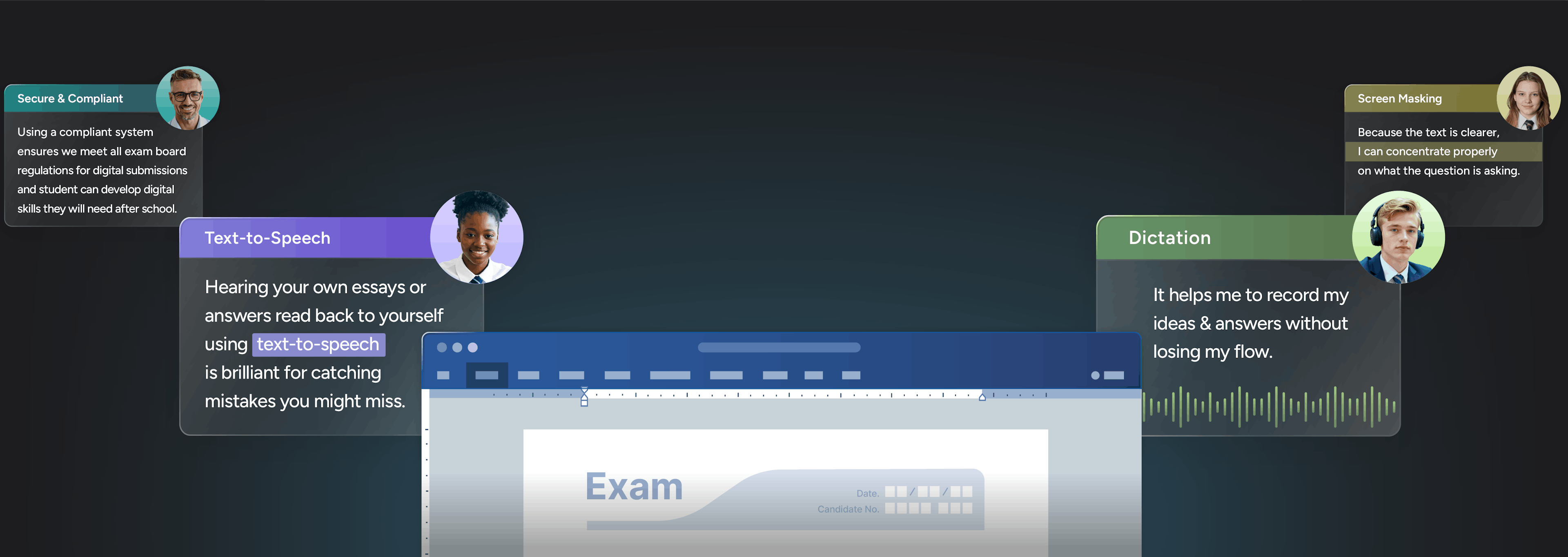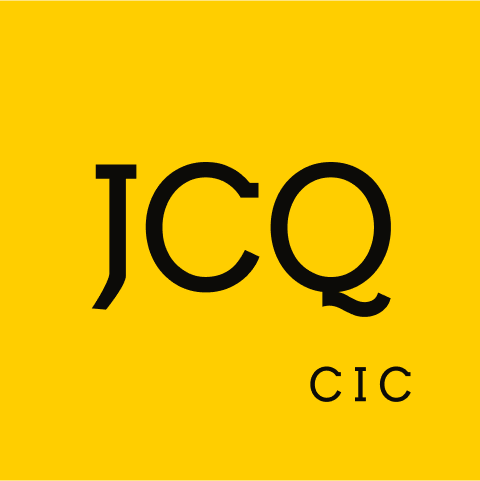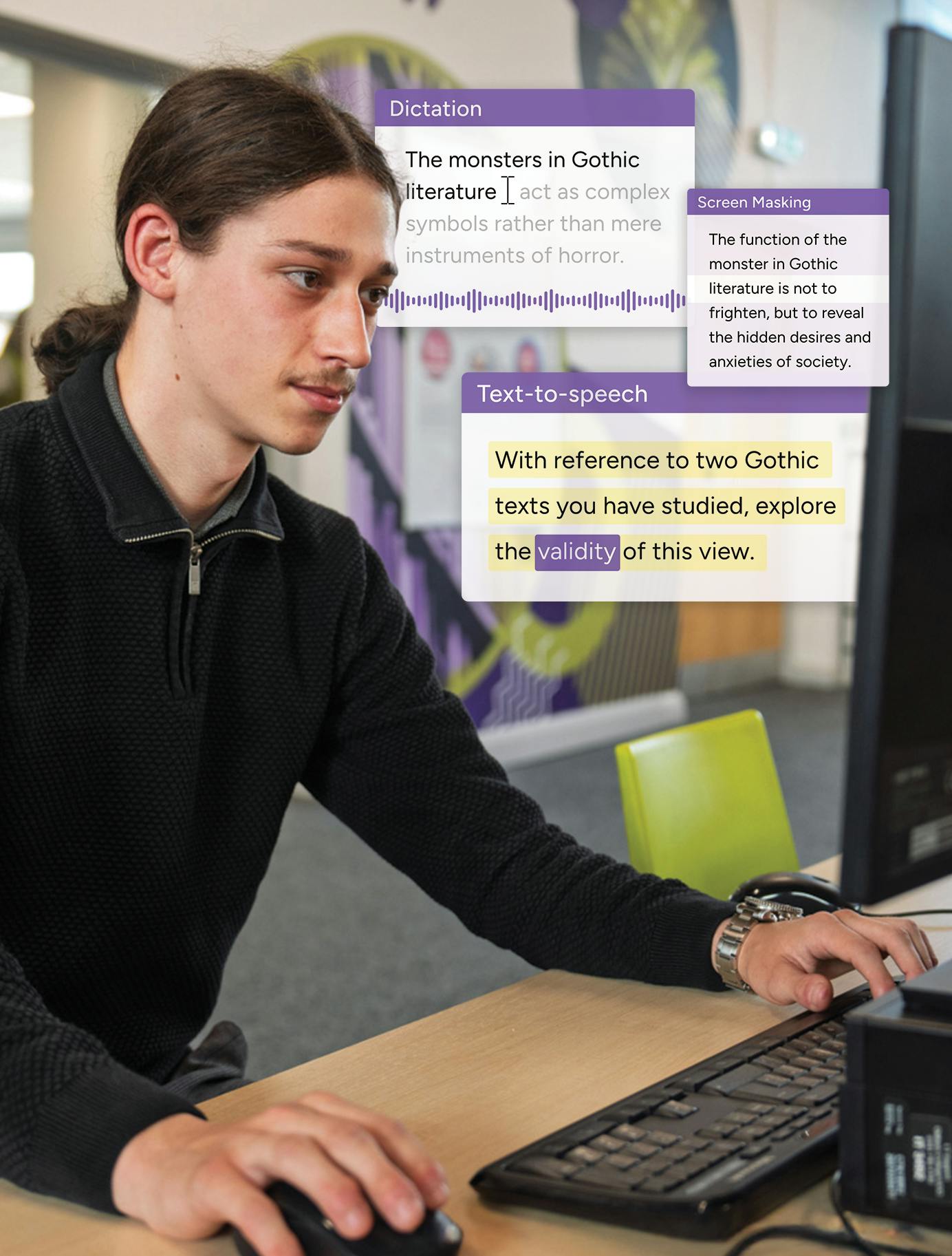
A guide to using
digital tools for JCQ
access arrangements

Get in touch
Tell us a bit about your exam needs and our specialists will be in touch soon.
Exam access arrangements
Exam access arrangements are the reasonable adjustments that can be made for students with specific needs, including dyslexia, to make exams more accessible.

Reasonable adjustments might include things like:
- Extra time to complete the exam
- The use of assistive technology
- Breaks during an exam
- Modified papers
291,700
In England, the most common type of need among pupils receiving SEN support is speech, language and communication needs, affecting 25.6% - that’s 291,700 students.
556,435
There were 556,435 approved access arrangements valid for use during the 2022/23 academic year, up by 8.7% compared with the 2021/22 academic year.
21.8%
A computer reader or reader is the second most common access arrangement, making up 21.8% of all arrangements valid for use in the 2022/23 academic year.
JCQ guidelines on digital tools
Digital exam tools like computer readers, scribes, and word processors can significantly benefit students with specific needs. The JCQ states that:

SENCos may wish to consider the use of technology to a much greater extent instead of readers and scribes. Computer readers, speech recognition technology and word processors not only allow candidates to work independently but are also a better preparation for Further & Higher Education and the world of employment.
What the JCQ guidelines say
Computer readers
For a candidate with reading difficulties, a computer reader may allow them to demonstrate their attainment more effectively and independently than would be possible with a reader.
Page 52

Computer readers
For a candidate with reading difficulties, a computer reader may allow them to demonstrate their attainment more effectively and independently than would be possible with a reader.
Page 52

New for 2025
Form 8 and Form 9 updates
When applying for a Computer Reader or Speech Recognition (scribe), you’ll now need to provide more detail on the forms. Form 8 must be fully completed before the assessment - no “skeleton” forms are allowed. Part 1 must include teacher feedback and evidence of the student’s normal way of working, such as classroom difficulties, timed tests or mocks. Parent comments can’t be included in Part 1 of Form 8 or Part 1 of Form 9.
How to apply for a JCQ access arrangement

Computer readers
Apply via Access Arrangements Online (AAO), using Form 8 if extra time and/or a scribe is also required, or Form 9 if the computer reader is needed on its own or due to an EHCP.

Scribe
Advance approval is required, and this involves Form 8/8RF

Word processors
If a Word Processor is part of a student's normal way of working, no AAO application is required, but spelling and grammar checks must be disabled.
The benefits of computer readers and scribes
Schools are increasingly turning to digital tools in place of human readers and scribes - and for good reason.
Ease the pressure on staff
Recruiting and training human readers and scribes can be time consuming and resource heavy. With digital tools, students get consistent, reliable support, without the staffing challenges.
Build student confidence
Using assistive technology helps students feel more in control. It promotes independence and mirrors the way they learn every day, reducing anxiety and better preparing them for life after school.
Ensure compliance
In the GCSE English Language paper, human readers can’t be used in the reading section. A computer reader is the only approved option—giving students the support they need, while keeping your centre compliant.
Make exams more manageable
Digital solutions reduce the logistical complexity of running exams. There’s less need for 1:1 support, meaning students can sit together in the same room, streamlining timetabling and invigilation.
Plan for the long term
Digital tools may involve an upfront investment, but they deliver long-term savings by reducing ongoing staffing costs and enabling you to scale support without scaling complexity.

Reduce the cost of exams with technology
Download this business case PDF to share with your Senior Leadership Team.
Everway tools meet JCQ guidelines
Our tools meet JCQ regulations, together they provide everything you need for exams and beyond - working as a Computer Reader, Scribe, and Word Processor as part of a student's normal way of working.

Used by 18.3% of Exams Officers*, ExamWritePad provides a secure writing environment specifically designed for use in exams and controlled assessments.

Read&Write can be used in place of a human reader in exams. Read&Write’s dictation feature can also be used in place of a human scribe in exams.

Our digital maths tool can be used in line with the JCQ regulations. It helps you save time, reduce costs and give students the support they need in exams.

The Chromebook solution for exam access arrangements. OrbitNote exam mode makes exams and assessments more accessible for students using Chromebooks.
*A survey of over 2,000 Exams Officers at the National Association of Exams Officers Conference found that the most popular tool for access arrangements is ExamWritePad, used by 18.3% of respondents.
Source: Access Arrangements for exams: The complete digital solution webinar
See it in action:
Read&Write for exams at Oldham College
When Oldham College wanted to give every student the same fair chance in exams, they chose Read&Write as a computer reader and scribe.
Today, their exams team uses Read&Write to support hundreds of learners - saving time, reducing stress, and helping students work more independently. All in line with JCQ guidelines.
Hear from their Exams Officer, leadership team, and students about the difference it’s making on exam day.

Join our expert led webinar
on digital exam access arrangements
In this webinar, you’ll learn from two exam experts how digital tools can help you, and keep you compliant.







